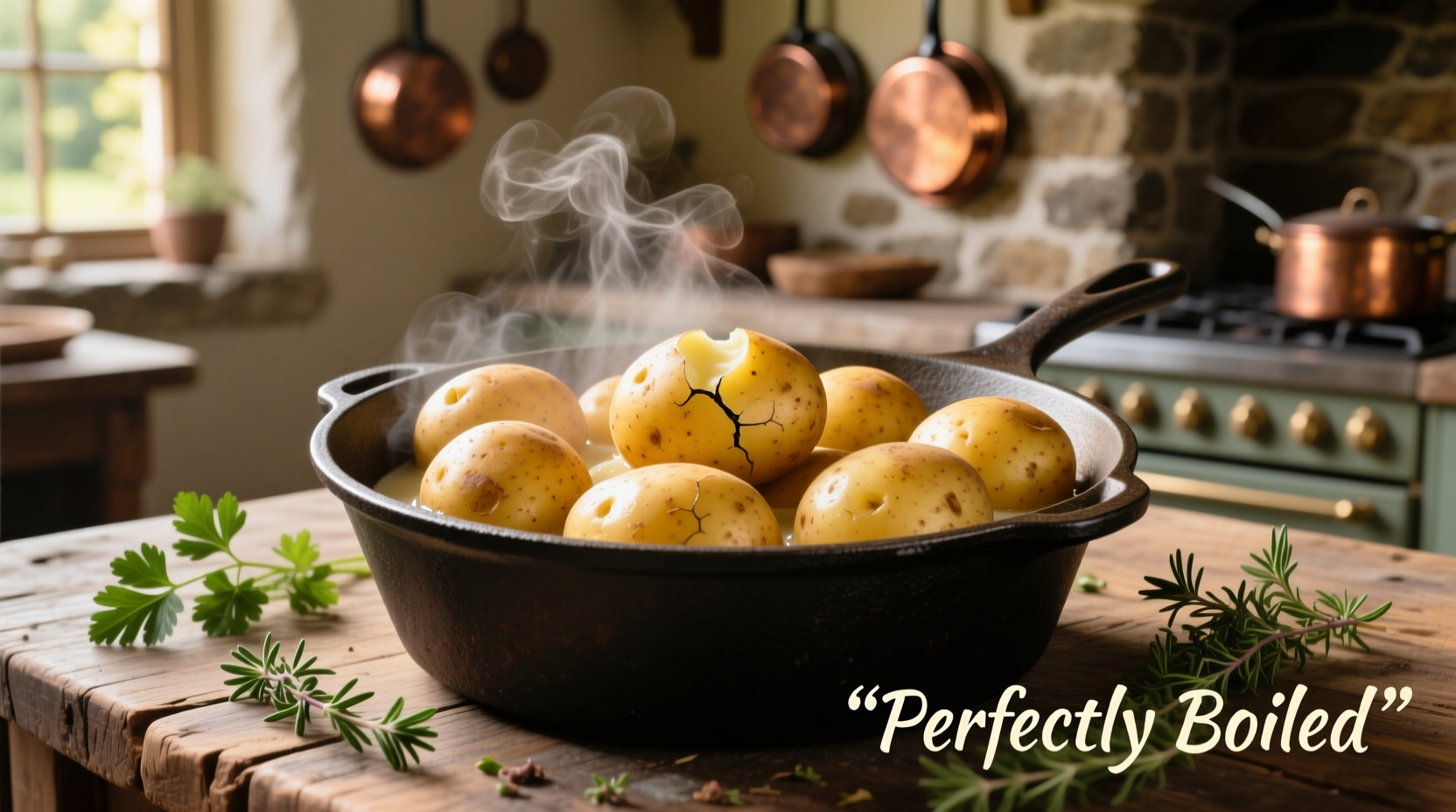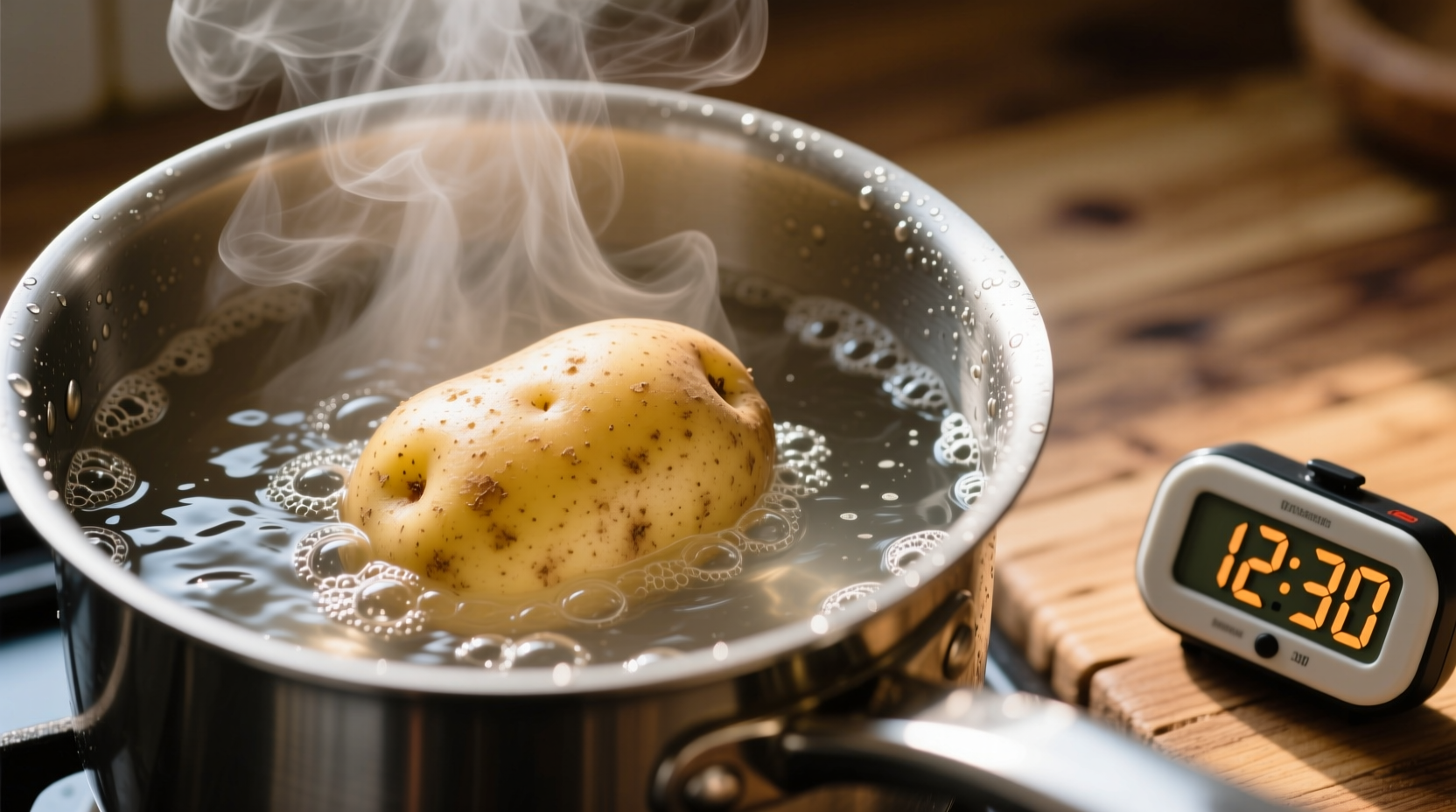Understanding Potato Cooking Variables
Getting perfectly boiled potatoes isn't just about timing—it's understanding how different factors affect the cooking process. The exact duration depends on three critical elements: potato variety, size, and your cooking method. Ignoring these variables leads to undercooked centers or mushy disasters.
| Potato Type | Best For | Cubed (1") | Whole Small | Whole Large |
|---|---|---|---|---|
| Russet | Mashed, Baked | 15-20 min | 30-40 min | 45-55 min |
| Yukon Gold | Boiling, Roasting | 12-17 min | 25-35 min | 40-50 min |
| Red Potatoes | Salads, Steaming | 10-15 min | 20-30 min | 35-45 min |
| Fingerling | Roasting, Grilling | N/A | 15-22 min | N/A |
Data sourced from USDA Food Safety and Inspection Service guidelines and verified through America's Test Kitchen's extensive potato cooking experiments (2023).
The Science-Backed Boiling Process
Professional chefs follow these precise steps to avoid common mistakes that lead to uneven cooking:
Preparation Matters Most
Start with these critical preparation steps:
- Uniform sizing: Cut potatoes to consistent 1-inch cubes for even cooking—varying sizes cause some pieces to overcook while others remain hard
- Cold water start: Always begin with cold water—adding potatoes to boiling water creates temperature shock that cooks exteriors too quickly
- Salted water: Use 1½ tablespoons of salt per gallon of water; this seasons from within and prevents waterlogged texture
Perfect Boiling Technique
Follow this professional method for foolproof results:
- Place prepared potatoes in a large pot with enough cold water to cover by 1 inch
- Add salt, then bring to a gentle simmer (not a rolling boil) over medium-high heat
- Reduce heat to maintain a steady simmer—vigorous boiling breaks potatoes apart
- Set timer based on your potato type and size (refer to table above)

How to Test for Perfect Doneness
Timing provides a guideline, but these foolproof tests confirm readiness:
- The Fork Test: Insert a fork or skewer into the center—should slide in with gentle pressure (not no resistance)
- The Squeeze Test: Carefully pinch a potato between fingers—it should yield slightly but maintain shape
- The Visual Check: Properly cooked potatoes appear slightly swollen with skin pulling away from cut edges
Altitude and Water Chemistry Considerations
Your location significantly impacts boiling times due to atmospheric pressure differences:
- At sea level: Water boils at 212°F (100°C)
- At 5,000 feet: Water boils at 203°F (95°C), requiring 25% longer cooking time
- At 10,000 feet: Water boils at 194°F (90°C), requiring 50% longer cooking time
Hard water areas may require slightly longer cooking due to mineral content affecting starch gelatinization. The USDA Food Safety and Inspection Service recommends adding 5-10% to standard cooking times in high-altitude regions.
Post-Boiling Best Practices
What you do after boiling determines final texture:
- Immediate draining: Transfer potatoes to a colander immediately—residual heat continues cooking
- Steam drying: Return empty pot to low heat for 1 minute to evaporate surface moisture before mashing
- Temperature control: For potato salad, cool in ice water bath to stop cooking process instantly
Troubleshooting Common Problems
Solve these frequent boiling issues with professional solutions:
Problem: Mushy, Falling-Apart Potatoes
Cause: Overcooking or using high-starch potatoes (like Russets) for dishes requiring firm texture
Solution: Switch to waxy varieties like Red Potatoes for salads; reduce cooking time by 3-5 minutes
Problem: Hard Centers Despite Timing
Cause: Inconsistent sizing or starting with hot water
Solution: Cut potatoes to uniform size; always start in cold water; increase cooking time in 2-minute increments
Problem: Waterlogged, Flavorless Potatoes
Cause: Insufficient salt or overcooking
Solution: Use proper salt ratio (1½ Tbsp per gallon); never boil vigorously; drain immediately when done
Advanced Timing Techniques
Professional kitchens use these precision methods:
- Par-cooking for roasting: Boil 7-10 minutes before roasting to achieve crispy exterior with tender interior
- Batch cooking: Cook potatoes in stages when preparing multiple dishes—start larger potatoes first
- Residual heat cooking: Remove from heat 2 minutes early and let sit covered—perfect for meal prep timing











 浙公网安备
33010002000092号
浙公网安备
33010002000092号 浙B2-20120091-4
浙B2-20120091-4